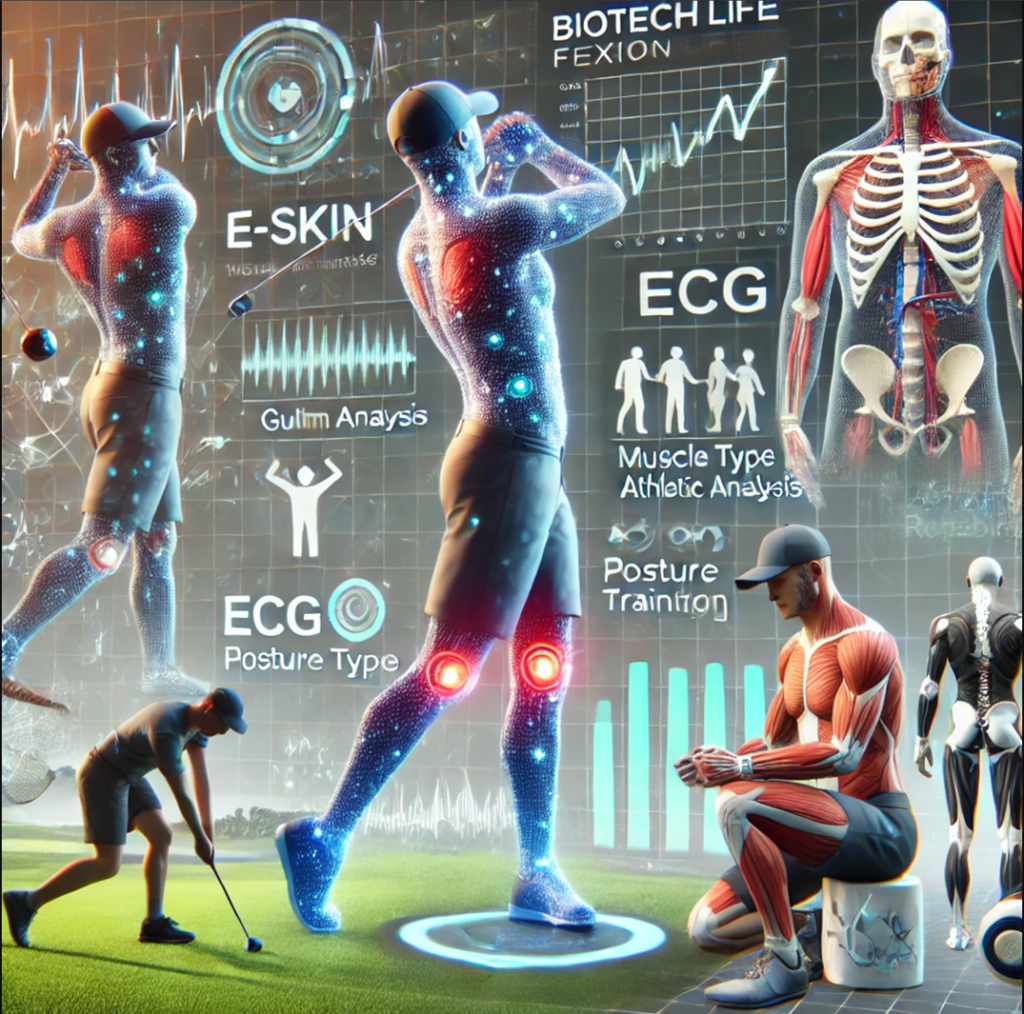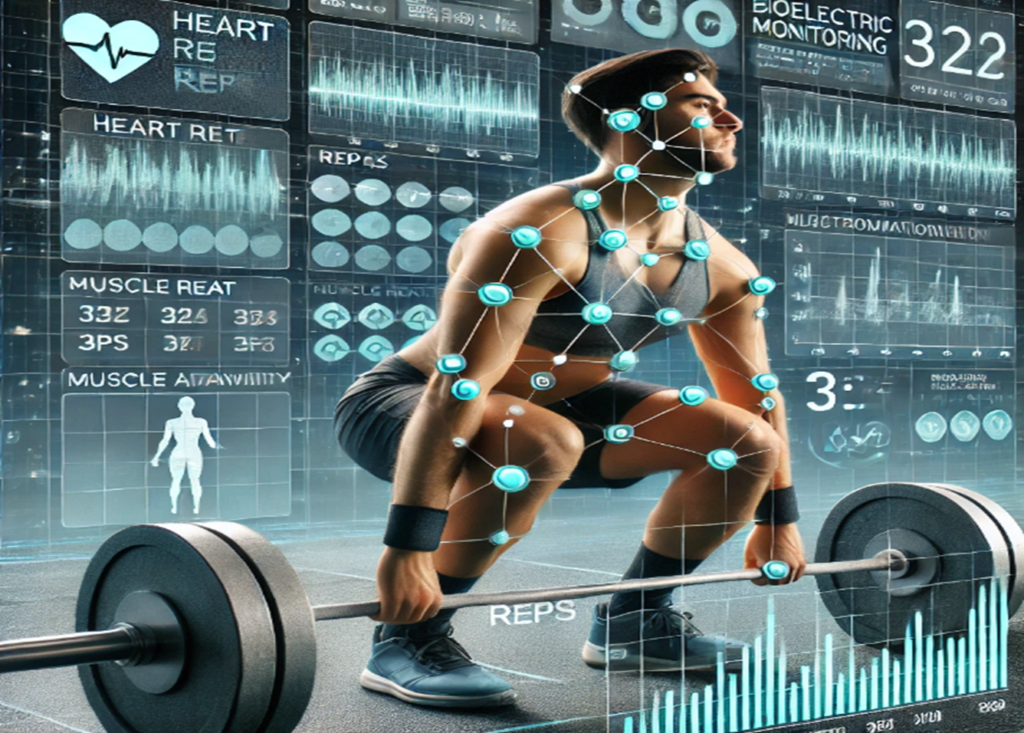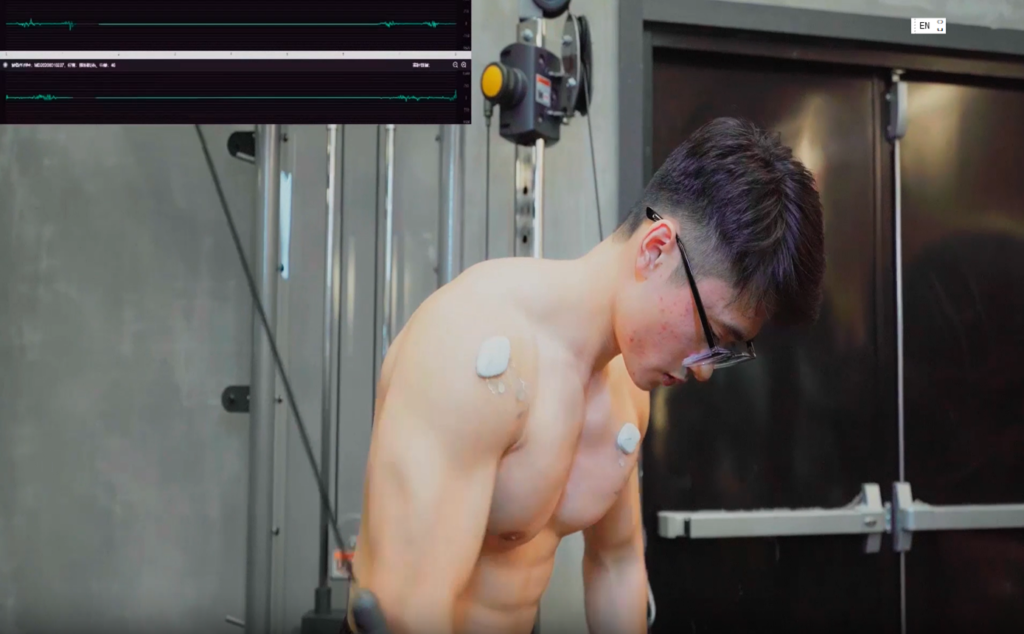
Sports Tech
Solutions
Flexion life eSports technology combines ECG, EMG, and AI biotech to provide comprehensive analysis and insights. These tools are used for various applications, including enhancing golf skills and optimizing gym workouts. By analysing athletes’ physiological data, eSports technology helps set precise performance targets and improve overall training effectiveness.
How It works?
During fitness exercises, Flexion life electromyography equipment monitors the discharge sequence, amount, and speed of target muscle fibers in real time. This data is then analysed to assess skeletal muscle contraction, force timing, and fatigue levels, helping to evaluate the exercise mode and competitive state of the user. Flexion life electrocardiography equipment monitors heart rate changes in real time to detect abnormalities, reduce risks, and further analyse cardiopulmonary health.
Golf Swing Performance
Flexion Life focused on the muscle movement In Golf Swing performance with the use of EMG (Electromyography) Bioelectric Sensors helps to collect detailed muscle activity data, allowing the players to Analyse their performance during the golf Swing

The sensors measure electrical signals from the muscles involved, identifying which muscles are engaged, their strength, and which muscle areas are having weakness
- Shoulders: very important for controlling the arm’s swing motion.
- Chest: Involved in the power formation of the swing.
- Arms: Responsible for arm extension and flexion during the swing.
- Forearm Muscles: Critical for grip strength and wrist control.
Using EMG Data to Enhance Muscle Performance:
The EMG IoT sensors capture the muscle activation patterns during the swing, allowing for a detailed understanding of how different muscles contribute to this motion. By analysing this data, players can:
- Identify weak muscles: The system can highlight muscles that are under-activated compared to optimal performance benchmarks.
- Monitor fatigue: EMG sensors track muscle fatigue in real time, allowing golfers to understand when their muscles are tiring and performance may decline.
- Refine technique: This data helps coaches and players tweak swing mechanics by focusing on strengthening weaker muscle groups

Coaches and player can compare this real-time data with Best performance benchmarks golf playing athletes and provide best possible training suggestions and twist the swings.
Lower-level athletes often have poor sports performance, with continuous muscle exertion throughout the action. In contrast, higher-level athletes typically relax their muscles for most of the action, exerting force quickly at the moment of impact to increase hitting distance. EMG equipment enables precise monitoring of muscle tension and force application during exercise.
Gym Muscle Training
EMG-Gym guided fitness training can significantly enhance muscle strength by providing detailed insights into muscle activation and performance. During the Gym guided fitness training, focus needs to be on maintaining muscle balance which helps in the proper functioning of the body. It ensures that no muscle group is overworked or immature, promoting overall physical health. This can further improve your physical performance, reduce the risk of pull over the muscle or injuries

Real-Time Monitoring: EMG (electromyography) equipment monitors the electrical activity of your muscles in real-time during exercises. This allows you to see which muscles are being activated and to what extent. Balance left and right muscle groups to prevent sports injuries;
Optimized Exercise Selection: By identifying the exercises that generate the highest muscle activation, you can tailor your workout routine to focus on the most effective movements for building strength. For example, EMG studies have shown that exercises like the dumbbell bench press can elicit significant muscle activation in the chest.
Improved Technique: EMG feedback helps you refine your exercise technique by showing you how different movements affect muscle activation. This can help you perform exercises more efficiently and safely, reducing the risk of injury.
Balanced Muscle Development: EMG data can reveal imbalances in muscle activation between different sides of your body or between different muscle groups. Addressing these imbalances can lead to more symmetrical and balanced muscle development.
Fatigue Management: By monitoring muscle fatigue levels, EMG-guided training can help you adjust your workout intensity and volume to optimize recovery and prevent overtraining.

Personalized Training Programs: EMG data allows for the creation of highly customized training programs that are tailored to your specific muscle activation patterns and fitness
Goals Injury Prevention: Balanced muscles movement help support joints and reduce the risk of injuries. When muscles on either side of a joint are equally strong, they stabilize the joint effectively, preventing strains and other injuries.
Improve Posture: Proper muscle balance ensures that your body maintains correct posture. This can prevent back pain and other posture-related concerns.
Enhance Performance: Balanced muscles contribute to better athletic performance. They allow for more efficient movement and coordination, which is essential for sports and physical activities.
Incorporating EMG-Gym guided fitness training into your routine can provide a scientific basis for your workouts, helping you achieve greater muscle strength and overall fitness.
